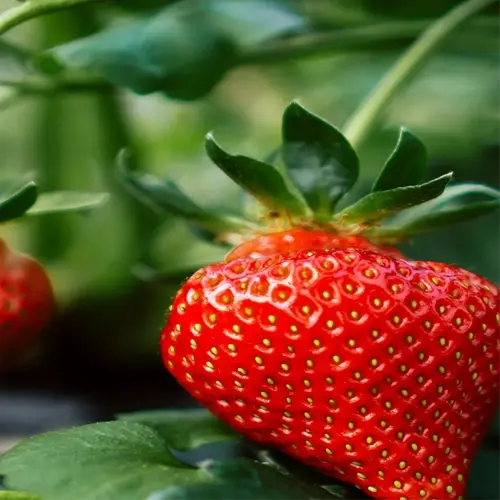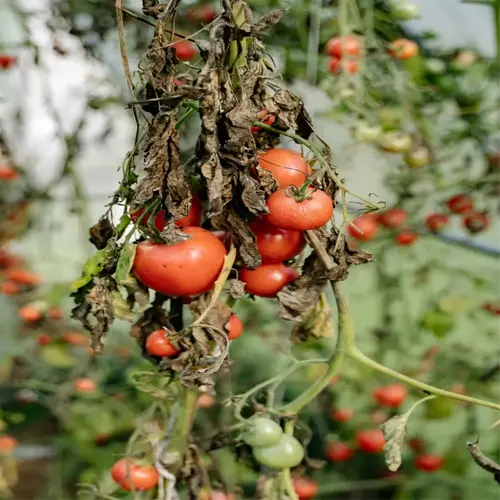How to Grow Tea at Home Successfully

Written by
Liu Xiaohui
Reviewed by
Prof. Samuel Fitzgerald, Ph.D.Tea growth necessitates acidic soil pH of 4.5-6 and protection from winter frost
If cultivating tea on a balcony or patio, grow in containers with ericaceous compost
Prune a tea plant every year at 20cm height increase leaf yield
To produce green tea, steam the leaves of the plant; for black tea, let leaves ferment for 72 hours
Tea is harvested after a spring flush growth cycle of the top two leaves + bud
Camellia sinensis takes 3 years to grow to maturity to harvest a full planting yield
Article Navigation
When learning how to cultivate tea, you engage in thousands of years of cultures and practices while embracing contemporary sustainability. Camellia sinensis harvested freshly from the garden is better than tea bags in flavor and environmental cost. Picture yourself sipping tea made from plants you are growing, without any plastic waste or carbon footprint from shipping. Growing tea Allen is as old as the Scottish growers in cooler climates, knowing that good tea can happen with minimal work at home.
I can still remember taking that first sip of tea from a potted tea plant grown on my patio. The floral notes of my tea left any store tea in the dust. Growing and sourcing your tea, you avoid blends brimming with pesticides and decide the quality of soil and debris used to grow and harvest the tea, which is unheard of for larger producers, who will sacrifice quality for larger yields. The Tea Gardens of Scotland provide an excellent case in point of how tea is adaptable and capable of growing in diverse conditions. A tea expert once said that tea could not grow in Scotland.
Planting Tea Seeds or Saplings
Your options for starting your new growing journey are seeds or saplings! Seeds are typically cheaper for the cost-conscious gardener but take longer (40-60% germination for starting seeds). Saplings are usually what beginner gardeners go to because they provide plants quickly with a 90% or more success rate! I have personal experience with this. I started seeds and waited months to see them grow unsuccessfully. I decided to switch to saplings, and my harvest time quickly followed!
Adaptations in the regional setting are critical. Cold hardy types such as 'Sochi' will winter in Zone 7 climates with mulch. Tropical types developed in Assam will require humidity. Local nurseries are a good resource for plants that will thrive in your climatic conditions. In rainy settings, for example, I use raised beds with additional gravel to avoid waterlogging during monsoons.
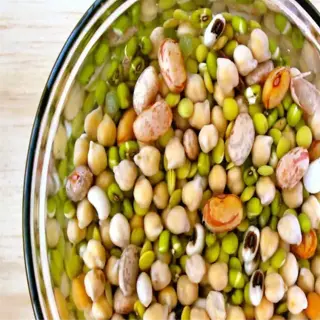
Seed Soaking Bowl
- Material: Use non-reactive glass or ceramic containers
- Capacity: Minimum 1qt (1L) for 50+ seeds
- Temperature: Maintain 65-75°F (18-24°C) water
- Duration: Change water every 12 hours
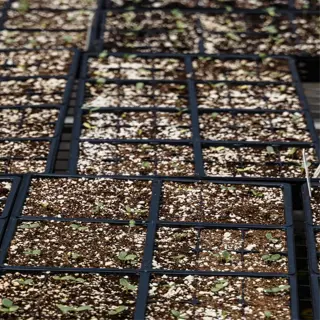
Germination Trays
- Depth: 2" (5cm) compartments prevent root tangling
- Material: FDA-approved food-grade plastic
- Drainage: 4+ holes per cell required
- Cover: Transparent dome maintains 80% humidity
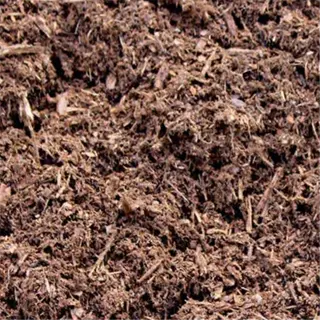
Acidic Soil Mix
- pH Level: 4.5-5.5 optimal for nutrient uptake
- Composition: 50% peat moss, 30% perlite, 20% pine bark
- Nutrients: Iron chelates prevent chlorosis
- Sterilization: Bake at 300°F (149°C) for 30 minutes
Essential Climate & Soil Prep
Leaf production essentially stops below 55°F, but my plants can be scorched by temps over 95°F. My plants like it best in the 65-85°F temperature range. In the winter, I wrap the pots in burlap when a frost is expected. For continental growers, windbreaks should be a priority, I use cedar hedges to protect the plants from drying winds in the Midwest.
Coffee grounds and other organic amendments will acidify the soil for a short period. In my case, I intersperse a cottonseed meal with iron sulfate to get a more lasting result. Mineral products have faster-acting properties but require that you use the right amount. In humid climates, I use pine bark mulch in layers to help eliminate soil compaction during heavy rains.
Temperature Ranges
- Optimal growth range: 65-86°F (18-30°C) sustains leaf production year-round in subtropical zones
- Dormancy trigger: Below 55°F (13°C) halts growth; prolonged exposure risks root damage
- Heat stress threshold: Sustained temperatures above 95°F (35°C) cause leaf scorching and bud abortion
Humidity Control
- Ideal range: 70-90% relative humidity prevents leaf desiccation in arid climates
- Low-humidity solution: Automated misting systems operate at 6AM-8AM daily
- High-humidity risk: Fungal pathogens develop above 95% RH without air circulation
Frost Protection
- Critical temperature: 28°F (-2°C) damages new growth after 4+ hours exposure
- Mulch application: 4" (10cm) pine straw layer insulates root zones
- Emergency protocol: Burlap wrapping with 50% light penetration for 3-5 frost days
Rainfall Requirements
- Annual minimum: 45" (114cm) with drip irrigation supplementation in dry seasons
- Drainage standard: 2" (5cm) per hour percolation rate prevents waterlogging
- Monsoon adaptation: Raised beds with 12" (30cm) gravel base in flood-prone areas
Sunlight Exposure
- Optimal duration: 4-6 hours morning sun with afternoon shade cloth (30% density)
- Low-light solution: Full-spectrum LED grow lights at 5000 lux for 14 hours daily
- Leaf scorch prevention: Rotate plants 90° weekly for even exposure distribution
Watering, Sunlight & Care Tips
Seedlings require special attention to hydration, so water them every other day with 4oz (118ml) of water for each one you have. Mature bushes love a soak every week with 1-gallon (3.78l). I almost lost my first crop from overwatering them. Always let the soil dry slightly before watering them again. Consider using a moisture meter to help reduce guessing, especially in a humid environment.
Sunlight needs to change as plants grow. Young plants need bright indirect light for 6 hours. Established tea bushes can handle 4-5 hours of direct morning sunlight. Here in my Texas garden, I use 30% shade cloth, so I don't burn leaf beauty in the summer afternoon sun.
Of course! In spring, fertilize with a 10-5-5 NPK formula to initiate robust leaf growth and then follow with a 5-10-10 NPK for promoting root growth. Make certain to not feed during summer months during a drought. I have had quite a few plants rebound after discontinuing synthetic fertilizers in favor of composting tea brewed from worm castings.
Pruning should occur in early spring before any new growth. Make the cuts at a 45° angle and ¼ inch above the leaf nodes. I doubled the harvest from plants by pinching tips as the plants were young. You should always remove deadwood first before thinning branches that are crowded so that you can allow for good airflow and sunlight.
Indoor Growing
- Optimal duration: 14hrs/day full-spectrum LED at 24" (61cm) height
- Lux requirement: 5000-7000 lux for vegetative growth
- Heat management: Maintain 75°F (24°C) with exhaust fans
Outdoor Shading
- Summer solution: 30% green shade cloth during 11AM-3PM
- Winter removal: Full sun exposure below 85°F (29°C)
- Frost protection: Combine with burlap wrap below 32°F (0°C)
Nutrient Balancing
- Spring formula: 10-5-5 NPK with iron chelates
- Fall blend: 5-10-10 NPK to strengthen roots
- pH maintenance: Apply sulfur 3x/year in hard water areas
Pest Management
- Common threats: Aphids, spider mites, and scale insects
- Organic control: Neem oil applied every 14 days at 2oz (59ml)/gal
- Prevention: Sticky traps monitor flying pests
Seasonal Pruning
- Spring: Remove dead wood after last frost
- Summer: Pinch back tips for bushier growth
- Fall: Avoid heavy cuts to prevent winter damage
Pruning & Harvesting Leaves
Bypass shears are designed to produce cleaner cuts on living stems than the anvil shears, which crush delicate tissues of your tea plants. I found this out the hard way after ruining several branches with dull tools. Always disinfect the blades of your pruners with rubbing alcohol when moving between plants to prevent the spread of pathogens. Pruners with sharpened blades promote faster healing and help reduce stress on your Camellia sinensis.
Collect leaves first thing in the morning after the dew has evaporated when *caffeine* and *flavonoids* are at peak levels. I harvest the drink using the first two tender leaves and bud whorls from each stem or branch. In my South Carolina garden, I gather these "flushes" from May to September every 7-10 days. If you're located in the tropics, you can harvest year-round!
Look for branches that have 4-6 mature leaves for pruning, and leave about 1/3 of the growth. I like to mark the productive stems with biodegradable tape so that I don't prune too much. Prune the stems that are growing inward first - this will help to get air circulating better in the plant. A similar method resulted in tripled profits in yield compared to random pruning.
Harvesting patterns are dictated by regional climatic conditions. In Scotland, growers can prune heavily each April before spring growth, and Florida growers can prune lightly every month. Given that my plants in Zone 8a don't rebound as quickly as those in Hawaii, I need to make adjustments to any timetable to match each regional climatic condition's temperature and rainfall.
Timing
- Morning harvest: Collect leaves after dew evaporates (8-10AM)
- Post-rain delay: Wait 48hrs after heavy rainfall
- Seasonal peak: Highest essential oils at 70°F (21°C)
Leaf Selection
- Premium grade: First two leaves + bud from new growth
- Oxidation control: Process within 2hrs of picking
- Damage check: Reject leaves with >5% discoloration
Storage
- Short-term: Paper bags at 60°F (16°C) for ≤3 days
- Long-term: Vacuum-seal with oxygen absorber at -4°F (-20°C)
- Quality test: Crush leaf; aroma should persist 30sec+
Seasonal Adjustments
- Spring flush: Light pruning (≤20% removal)
- Summer growth: Moderate shaping (40% max)
- Autumn prep: Remove dead wood pre-dormancy
Regional Variations
- Tropical: Year-round harvest with 6-week cycles
- Temperate: 3-4 flushes between May-September
- Arid: Reduce harvest intensity by 30%
Processing Tea Like a Pro
Green tea undergoes no oxidation, whereas oolong tea develops complexity due to oxidation. Oolong oxidation is usually anywhere between 30-70% oxidation. Black tea is produced with complete 100% oxidation and is manufactured by microbially controlled fermentation. I ruined my first batch of oolong tea due to a lack of being able to determine its sweet spot, and now I set timers and check the edges of the leaves every 30 minutes to see if they are brown.
When leaves are damaged during rolling, that commences enzymatic reactions, and catechins are released, which are responsible for the darkening of the leaves. I use bamboo mats to spin stems to avoid excessive processing. Humidity is also an important factor, and, personally speaking, I like to stay within the 70-80% range to slow oxidation so that flavors will have time to develop. If the leaves are too dry, the process will stagnate.
Cooking eliminates oxidation. For green tea, I sear the leaves in a wok at 300°F (149°C) for 90 seconds. Oolong tea must be heated slowly to reach around 212°F (100°C). In Japan, my friend uses steam trays, while I prefer pan-firing because it locks more of the grassy aromas.
Regional drying practices create the final profiles. For example, farmers in Fujian sun-dry oolong on woven grass mats. My Scottish mentor is very consistent and will use dehydrators at 122°F / 50°C in damp climates. Charcoal firing can create smoky-style Lapsang Souchong tea. I will take the wet leaf and lay it over smoldering peachwood chips.
Oxidation Control
- Critical window: 68-75°F (20-24°C) for controlled enzymatic activity
- Halting method: Flash-heat to 300°F (149°C) stops oxidation instantly
- Monitoring: Check leaf edges for reddening every 30mins
Drying Methods
- Sun-drying: 3 days at 85°F (29°C) with UV protection cloth
- Oven-drying: 250°F (121°C) for 20mins with air circulation
- Charcoal firing: Traditional bamboo trays over 600°F (316°C) coals
Flavor Enhancement
- Scenting: Layer jasmine flowers overnight (8hrs max)
- Smoking: Applewood chips at 200°F (93°C) for 45mins
- Aging: Clay jars at 60°F (16°C) for 3-7 years
Storage Protocols
- Moisture control: 3% max with silica gel packs
- Light protection: Amber glass containers block UV rays
- Temperature: 40-60°F (4-16°C) ideal for long-term storage
Blending Science
- Base ratios: 70% main tea + 20% flavorant + 10% enhancer
- Synergy principle: Pair high-tannin teas with citrus oils
- Shelf life: 6 months for blended teas vs 2 years for pure
5 Common Myths
Tea plants can only flourish in tropical Asian climates like China or India
Camellia sinensis grows well in many more climates including Scotland (UKDA Zone 8) and Washington State (USDA Zone 7) given sufficiently acidic soil and protection for new plants in winter.
You'll need industrial equipment to process drinkable tea leaves at home
Basic tea processing involves only normal household items (a baking sheet for drying, steam basket to control oxidation, and an airtight container for storage) - no special equipment is necessary.
All true teas are fermented for weeks like those that are pu-erh
Green and white teas undergo no fermentation, while oolong teas typically require between 2-8 hours of controlled oxidation. Complete fermentation occurs only in black and dark teas, such as pu-erh.
Tea plants can be toxic to pets and children if ingested
It's important to limit caffeine overload, but fresh tea leaves only contain 3-4% caffeine and are not considered risky. Camellia sinensis is listed as non-toxic to pets by the American Society for the Prevention of Cruelty to Animals.
Tea must be closely monitored, and the ability to be an expert gardener
When tea plants mature they require water only 1-2 times a week and pruning once a year. Container-grown varieties will be successful with very simple care (in comparison to houseplants like a spider plant or pothos).
Conclusion
You can grow Camellia sinensis in virtually any weather with a little thought into preparing the soil. I've grown plants from the super humid weather of Florida through to the cold weather of Oregon by mixing the beds with peat moss and perlite. It's a good idea to invest in a pH test kit, this 15 dollar option will certainly help you avoid expensive mistakes. Even an urban balcony will work for tea plants, just be sure the barrel has drainage and that the mix is acidic.
Patience defines the first three years. The first harvest along the way was a few ounces at most; in the fourth year, the plants were lucky to have enough to yield enough leaves for a weekly batch of brewing. You will want to track their growth monthly; healthy blueberry bushes can gain 8-12 inches each year. Don't overharvest young bushes, and resist the temptation to do so. That first full flush is so much sweeter because of the few years you waited.
Flexible processing enables home growers. I have tried experimentation in my kitchen with tea from pan-fired green tea to fully oxidized black tea. All from a single plant can be made into a tea style and specialized for warmer weather, with some leaves steamed and fresh, and others fermented in glass jars. I think local method variations and tweaks matter, for example, I cold-brew Hawaiian-grown leaves for an even longer duration to improve the smoother tannins.
Alter techniques for your microclimate. In Arizona, growers use shade cloth to cover plants during peak temperatures, while growers use thermal compost to warm roots in Alaska. I've observed Maine gardeners wrapping their bushes in burlap until the end of June to avoid frost. The way you adapt could generate your local tea options.
External Sources
Frequently Asked Questions
Can tea plants thrive in home gardens?
Yes, tea plants adapt well to home gardens when grown in acidic soil (pH 4.5-6) and sheltered locations. Container gardening works for small spaces, and plants need winter protection in zones below USDA 8.
What climate is required for growing tea?
Tea thrives in temperate to subtropical climates with consistent rainfall and mild winters. It tolerates USDA zones 7-10, but young plants need frost protection. Ideal temperatures range between 65-85°F for optimal growth.
How do you harvest tea leaves correctly?
Pluck the top two young leaves and bud during spring/summer growth flushes. Use clean shears to avoid damaging stems. Process leaves within 2 hours to prevent oxidation for green tea or ferment for black tea.
Are tea plants safe around pets?
Camellia sinensis is non-toxic to pets, but excessive leaf consumption may cause mild caffeine-related effects. The ASPCA classifies it as pet-safe. Always supervise pets around garden plants to prevent digging or over-ingestion.
Can you grow tea indoors year-round?
Indoor cultivation is possible with bright, indirect light and humidity trays. Use grow lights for 12-14 hours daily. Maintain temperatures above 55°F and rotate plants weekly for even growth.
What mistakes ruin homegrown tea quality?
Common errors include:
- Over-fermenting leaves, creating bitter flavors
- Using alkaline soil or hard water
- Harvesting old, tough leaves
- Skipping post-harvest drying/storage steps
Do tea plants attract pests?
Tea plants may attract aphids or spider mites in dry conditions. Prevent infestations with neem oil sprays and proper airflow. Companion planting with marigolds or garlic deters most insects naturally.
How is homegrown tea processed?
Basic home processing involves:
- Wilting leaves in shaded areas
- Rolling to release enzymes
- Oxidizing for desired tea type
- Drying completely in ovens/dehydrators
- Storing in airtight containers
Can you grow tea from store-bought seeds?
Fresh seeds germinate best, soak them for 24 hours before planting. Store-bought seeds often have low viability. Opt for nursery-grown saplings or reputable seed suppliers specializing in Camellia sinensis.
Why do tea leaves turn brown after picking?
Browning indicates oxidation, a natural enzymatic process. To make green tea, steam leaves immediately after harvesting. For black tea, allow full oxidation by fermenting leaves in humid conditions for 24-72 hours.
